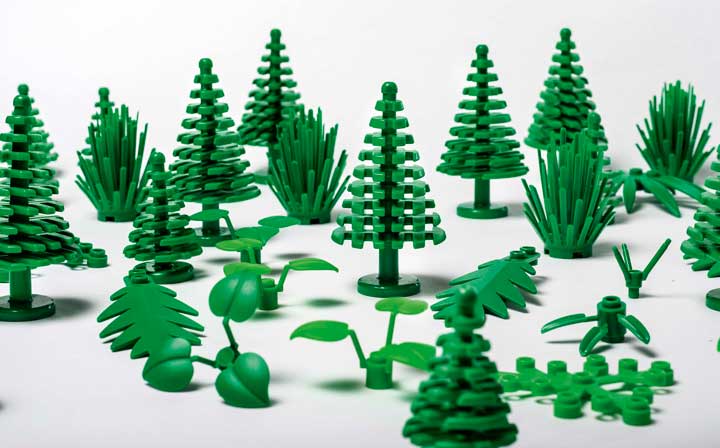LEGO is an iconic toy brand that began with wooden toys in 1932 and expanded into plastic toys in 1947. The company name “LEGO” is an abbreviation of the two Danish words “leg godt”, meaning “play well” according to the company.
The company’s most important product is the traditional LEGO brick, launched in 1958, and it’s made of a petroleum-based plastic, acrylonitrile-butadiene-styrene, or ABS. According to Wired.com, LEGO makes “more than 3,700 individual elements. It uses 20 different kinds of plastic…” and as many as 80 percent of LEGO pieces are made of ABS.
Back in 2015, the company put $155 million towards the goal of using fully sustainable materials in LEGO products by 2030.
Comment from LEGO Group owner Kjeld Kirk Kristiansen:
“Our mission is to inspire and develop the builders of tomorrow. We believe that our main contribution to this is through the creative play experiences we provide to children. The investment announced is a testament to our continued ambition to leave a positive impact on the planet, which future generations will inherit. It is certainly in line with the mission of the LEGO Group and in line with the motto of my grandfather and founder of the LEGO Group, Ole Kirk Kristiansen: Only the best is good enough”.
In March 2018, reports Wired.com, “the company showed off the first brick-based fruits of those efforts: About 25 different Lego shapes, many of them plants, will now be made from sugarcane-based polyethylene rather than oil-based plastic.”
This is a pretty exciting for a company that’s main product is made from an oil-based plastic.
LEGO took around two years to choose the sugarcane-based plastic that can be recycled many times, though it probably isn’t 100% biodegradable. That time was spent “sourcing, testing, and perhaps most importantly figuring out how to produce the bricks in quantity.” The company doesn’t want to just replace the petroleum-based, LEGO wants to find a sustainable material that “precisely” replicates them.

“You never notice the difference. That is what our fans, young and old, are obviously concerned about as well,” says Tim Brooks, a Lego vice president who heads up environmental responsibility efforts about the new LEGO pieces. “In this occasion, what we’ve produced has exactly the same durability, quality, and safety as we have today.”
To read more about the new sustainable LEGO pieces, visit https://www.lego.com/en-us/aboutus/news-room/2018/march/pfp/.